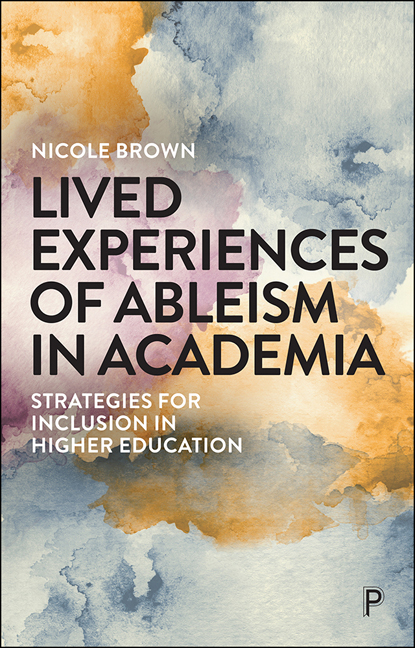12 - #AutisticsInAcademia
Published online by Cambridge University Press: 18 December 2021
Summary
Introduction
Community definition of Autistic experience
Autism diagnostic features are defined by the current Diagnostic and Statistical manual (DSM V5) as ‘persistent impairment in reciprocal social communication and social interaction; restricted, repetitive patterns of behaviour, interests, or activities, [where] symptoms are present from early childhood and limit or impair everyday functioning’ (American Psychiatric Association, 2013: 53). The DSM goes on to state, ‘some fascinations and routines may relate to hyper- or hypo-reactivity to sensory input, manifest through extreme response to e.g. sounds; textures; smell; touch’ (54). Autistic people may also be diagnosed with accompanying intellectual disability and/or language impairment. However, it is important to note that these impairments are not core specifiers for an autism diagnosis (American Psychiatric Association, 2013; World Health Organization, 2018). While this is the official DSM definition of ‘autism spectrum disorder’ – an outsider's perspective – there is utility in presenting the lived experience definition of Autistic experience:
Autism is a developmental phenomenon, meaning that it begins in utero and has a pervasive influence on development, on multiple levels, throughout the lifespan. Autism produces distinctive, atypical ways of thinking, moving, interaction, and sensory and cognitive processing. One analogy that has often been made is that Autistic individuals have a different neurological “operating system” than non-autistic individuals. (Walker, 2014b)
From our perspective, and including the perspective of other Autistic people we have worked with, the most important aspect of being Autistic is our sensory processing. The differences in the way we, and other Autistic people, interact and communicate socially can be explained by the way we sensorially experience the world. This sensory experience also explains our affinity for routine and structure. For an Autistic person, the sensory and thus social environment can often be loud, smelly, bright and chaotic, to an extreme that can be painful. Controlling, structuring and making predictable as much of our experiences within this sensorially chaotic and often surprising world helps us regulate what would otherwise be a constant sensory onslaught.
We cannot emphasise enough that most Autistic experiences and behaviours can be explained by our hyper- or hyporeactive sensory processing. Simply adopting this viewpoint may assist non-autistic people to gain an understanding of our experiences, which can help facilitate interacting, accommodating and working with an Autistic peer, colleague, or employee.
- Type
- Chapter
- Information
- Lived Experiences of Ableism in AcademiaStrategies for Inclusion in Higher Education, pp. 197 - 216Publisher: Bristol University PressPrint publication year: 2021



